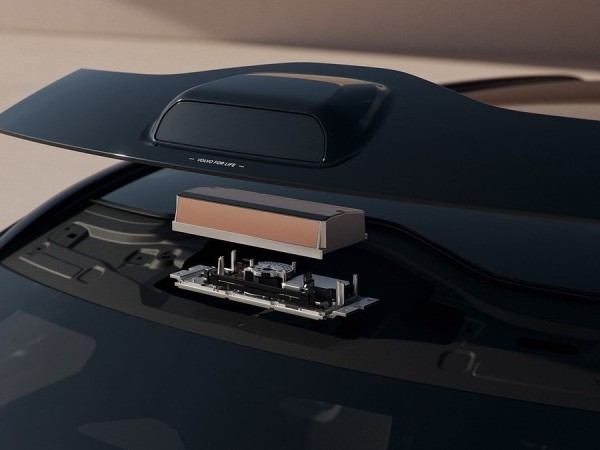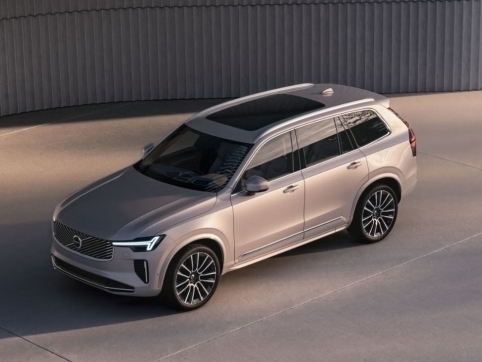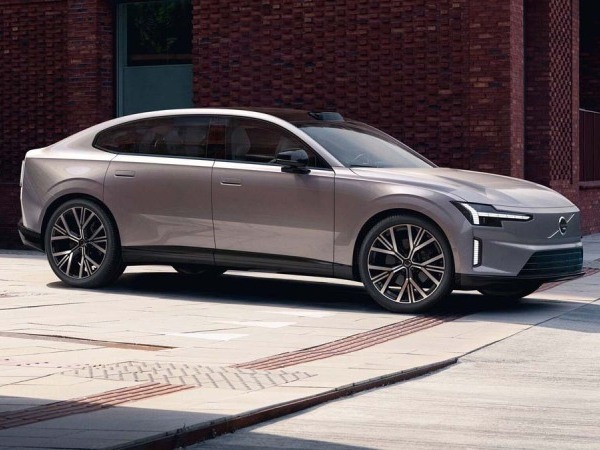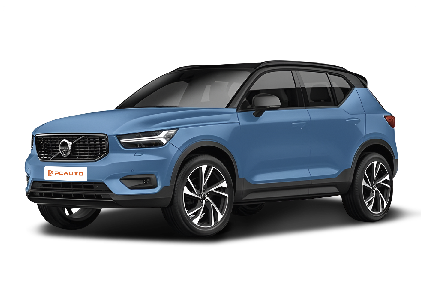Q
Is the Volvo XC40 worth buying?
As a luxury compact SUV, the Volvo XC40 is truly worth considering in the Malaysian market, especially for consumers who value safety and Nordic design. It comes standard with the City Safety system across all models, which includes functions such as automatic emergency braking and lane-keeping assist. These features are highly practical for the complex urban road conditions in Malaysia.
In terms of power, it offers T4/T5 gasoline versions and a Recharge plug-in hybrid version. The T5 version has 247 horsepower and is paired with an 8-speed automatic transmission, delivering abundant power. The plug-in hybrid version is more suitable for users who pursue low fuel consumption.
The interior uses eco-friendly materials. It is standard with a 12.3-inch digital instrument cluster and a 9-inch central control screen, and supports Apple CarPlay. However, the rear-seat space is a bit cramped compared to its peers in the same class.
The starting price in Malaysia is around RM250,000. It offers good value for money compared to other luxury brands in the same class, but the maintenance and repair costs are slightly higher than Japanese cars. It's worth noting that the XC40 recently received a five-star rating in the ASEAN NCAP test, and its ground clearance of 211mm can handle some unpaved roads in Malaysia.
You can also compare other luxury brand models in the same price range. However, Volvo has prominent advantages in safety and air quality management. It is recommended that you take a test drive at an authorized dealer to experience the actual performance of the vehicle before making a decision.
Special Disclaimer: This content is published by users and does not represent the views or position of PCauto.
Related Q&A
Q
Is the Volvo XC40 a hybrid car?
The Volvo XC40 does offer a hybrid version. The XC40 Recharge sold in the Malaysian market is a plug-in hybrid electric vehicle (PHEV). It combines a fuel engine with an electric motor. With a pure-electric range of about 50 kilometers, it's perfect for short-distance commuting and can reduce fuel consumption, while still retaining the convenience of traditional power for long-distance trips.
In addition, the XC40 also has a pure-electric version (XC40 Recharge Pure Electric), which uses a fully electric drive system. However, it's important to note the differences in charging infrastructure requirements and driving experiences between hybrid and pure-electric models.
The Malaysian government offers tax incentives for hybrid vehicles. When making a purchase, you can consult the dealer for the latest policies. Volvo's hybrid technology emphasizes the balance between environmental protection and performance. The battery safety has undergone rigorous testing, making it a great choice for consumers who value sustainable travel.
If you're concerned about fuel consumption and emissions, the hybrid version is more cost-effective than the pure-fuel version. But you need to make your choice based on your budget and daily driving mileage. It's recommended to take a test drive to compare the handling experiences of the two power systems.
Q
Does the Volvo XC40 hybrid charge while driving?
The Volvo XC40 Hybrid is a plug-in hybrid electric vehicle (PHEV). It can indeed charge the battery during driving through regenerative braking and part of the engine's power. However, it's important to note that the efficiency of this charging method is limited and it can't fully replace plug-in charging. The regenerative braking system converts kinetic energy into electrical energy and stores it in the battery when braking or coasting, and the engine also provides some charging support for the battery during high-speed cruising.
Nevertheless, to get the best effect of electric energy replenishment, it is recommended to charge the vehicle regularly via an external power source to ensure the battery is in the best condition and to maximize the pure-electric driving range. For users in Malaysia, due to the hot climate, frequent use of the air-conditioning may affect the battery's range. Therefore, it's particularly important to reasonably plan charging and use the hybrid mode.
In addition, the hybrid system of the Volvo XC40 Hybrid is designed to balance environmental protection and performance, making it suitable for both city commuting and long-distance driving. But in daily use, it's still necessary to pay attention to battery maintenance and avoid keeping the battery at a low charge level for a long time to extend the battery's lifespan.
Q
Can I charge my Volvo XC40 at a Tesla charging station?
The Volvo XC40 comes in different powertrain versions. If it's not the all-electric version, there's no way to charge it at a Tesla charging station. For the all-electric Volvo XC40, it usually can't be directly charged at a Tesla charging station. This is because the Tesla charging connector and its standards differ from those of vehicles of other brands. The Tesla charging connector is unique to Tesla and is incompatible with the common charging standards followed by most automakers.
However, there are some adapter devices on the market, but these adapters don't always fit perfectly. Moreover, Tesla charging stations are mainly for Tesla owners, and their usage rules and network coverage prioritize Tesla vehicles. If you want to charge your Volvo XC40, it's recommended to use the charging network designated by Volvo or public charging facilities to ensure safe and smooth charging.
Q
Can I charge my Volvo XC40 at home?
Yes, you can charge your Volvo XC40 at home. If your Volvo XC40 is a pure-electric model, it supports home charging. You can use an 11kW home AC charger. For instance, it takes around 8 hours to charge the battery from 0 to 80% capacity with this charger.
We recommend installing a Volvo Cars wall-mounted charger. It offers faster and more efficient charging compared to a regular wall socket. The wall-mounted charger comes with an integrated cable holder and a 5-metre charging cable with a Type 2 socket (IEC 62196), making it compatible with all fully electric Volvo cars. You can install the wall-mounted charger either indoors or outdoors as it's water-resistant.
If you don't have a wall-mounted charger, you can also use a standard power plug to connect the vehicle to a power socket for charging, but the charging time may be longer. Just make sure to check the charging equipment before use to ensure safe charging.
Q
Can you put regular fuel in a Volvo XC40?
For the Volvo XC40, whether it can use regular fuel depends on the specific engine model. The XC40 sold in the Malaysian market mainly offers two petrol versions, T4 and T5. Both of these engines are designed to use RON 95 petrol (regular fuel in Malaysia). So, it's completely okay to use regular fuel without causing damage to the engine. However, it should be noted that long -term use of low-octane fuel may affect the engine's performance and fuel economy.
Volvo's engine technology has been optimized for different fuel octanes and can automatically adjust the ignition timing to adapt to the fuel quality. But to achieve the best performance, it is recommended to use higher-octane fuel like RON 97 when conditions permit. The quality of petrol in Malaysia is strictly regulated, and both RON 95 and RON 97 meet international standards. Car owners can make a flexible choice based on their actual needs and budgets. Meanwhile, regular maintenance and using the fuel additives recommended by the original manufacturer can also help keep the engine in good condition.
In addition, although the engines of the Volvo XC40 are compatible with regular petrol, diesel-powered models (such as the D4) must use diesel. Mixing fuels will lead to serious malfunctions, which requires special attention.
Q
Is the Volvo XC40 self charging?
The Volvo XC40 offers various powertrain versions in the Malaysian market, including traditional fuel-powered models and plug-in hybrid electric vehicle (PHEV) versions. However, it's important to note that the XC40 doesn't have a true "self-charging" function. This term is commonly used to describe the ability of some hybrid models to charge the battery through kinetic energy recovery or the engine. In contrast, the plug-in hybrid version of the XC40 needs to be charged from an external power source to fully leverage its electric driving range advantage.
For Malaysian consumers, if you're considering energy conservation and environmental protection, the plug-in hybrid XC40 Recharge is a great option. It combines the flexibility of pure-electric driving and fuel power, making it suitable for both city commuting and long-distance driving. Meanwhile, Volvo has always maintained high standards in terms of safety and technological features. For example, it comes standard with the Pilot Assist driving assistance system and high-quality interior materials.
If you prefer a hybrid model that doesn't require charging, you can look into mild hybrid electric vehicle (MHEV) options from other brands, as the XC40 doesn't currently offer such a version. It's recommended that you thoroughly understand the characteristics of each powertrain type before purchasing a car and make a choice based on your driving habits and charging conditions.
Q
Can I charge my Volvo XC40 to 100%?
The Volvo XC40 comes in different versions. For example, the 2021 Volvo XC40 Recharge T5 R-Design is a Petrol Hybrid (HEV, MHEV) type, not a pure electric vehicle. So, there's no such thing as charging it to 100% in the conventional sense. However, if it's the pure electric version of the XC40, it can theoretically be charged to 100%. But from the perspectives of battery maintenance and actual use, you don't necessarily have to charge it to 100% every time. Frequently charging the battery to 100% may have a certain impact on the long - term battery life. Generally, charging it to around 80% - 90% for use helps to extend the battery's service life. In addition, factors such as charging speed and the power of the charging pile also affect the charging time. In short, the pure electric XC40 can be charged to 100%, but considering factors like battery health, you can flexibly choose the appropriate charging level.
Q
Does a Volvo XC40 have two batteries?
The Volvo XC40 usually comes with three batteries instead of two. The 48V battery is exclusive to the B-series models. It's located in the trunk and comes with a three-year warranty. The 12V battery is on one side of the engine compartment. It costs around 2000 at the 4S store and has a two-year warranty. It's mainly responsible for starting the vehicle, the start-stop function, and powering devices like the radio after the engine is off. The start-stop battery is located under the front left longitudinal beam in the engine compartment and has a three-year warranty. During vehicle startup or the instant of start-stop, it powers the CEM central electronic module, the ECM engine module, and the PSCM engine module, relieving the power-supply pressure on the 12V battery. Each battery has its own specific role to ensure the normal operation of various vehicle systems. Car owners should also pay more attention to the battery status during daily use to guarantee the vehicle's stability and reliability.
Q
Is the Volvo XC40 fuel efficient?
The Volvo XC40's performance in fuel economy is just average, specifically depending on the power configuration and driving conditions. The 2.0-liter turbocharged engine it is equipped with consumes approximately 7.5 to 8.5 liters per 100 kilometers in combined driving conditions. This is a mainstream level for a compact SUV. If you choose the plug-in hybrid version (such as the XC40 Recharge), it can achieve an all-electric range of about 45 kilometers, which is more suitable for short urban commutes and can significantly reduce fuel consumption. Malaysian consumers should note that the actual fuel consumption may be affected by road conditions, driving habits, and the frequency of air-conditioning use. For example, congested roads in Kuala Lumpur may increase fuel consumption by 10% to 15%. Among vehicles in the same class, Japanese hybrid SUVs may be more fuel-efficient, but the advantage of the XC40 lies in its Nordic-style safety features and environmentally friendly interior materials. It is recommended that before purchasing a car, you weigh the price difference between the fuel-powered version and the plug-in hybrid version based on your daily driving mileage. If your annual driving mileage exceeds 20,000 kilometers, the plug-in hybrid version will be more cost-effective in the long run. Additionally, the Malaysian government's tax incentives for energy-efficient vehicles (EEV) are also worth considering, and some XC40 models may be eligible for tax exemptions or reductions.
Q
Is the Volvo XC40 underpowered?
Whether the Volvo XC40 has insufficient power depends on the specific model and driving needs. In the Malaysian market, the XC40 offers two gasoline-powered versions, T4 and T5. The T4 is equipped with a 2.0-liter turbocharged engine, delivering 197 horsepower and 300 Nm of torque, while the T5 version boosts it to 247 horsepower and 350 Nm. It's more than enough for daily city commuting and highway cruising. Especially, the T5 version performs better in acceleration, taking only 6.4 seconds to go from 0-100 km/h. If you're looking for even stronger power, you can consider the plug-in hybrid Recharge model, which has a combined output of 262 horsepower.
Moreover, the XC40's 8-speed automatic transmission is tuned for smooth operation. Paired with the front-wheel drive or all-wheel drive system, it can adapt to various road conditions. For Malaysian users, its power performance is sufficient to handle steep slopes and long-distance driving in the tropical climate. Compared with luxury SUVs in the same class, the XC40's power parameters are above average. At the same time, it retains Volvo's consistent safety and environmental protection concepts.
It is recommended that potential car owners choose the appropriate version according to their budgets and driving habits and make an appointment for a test drive to experience the power response firsthand.
Latest Q&A
Q
Is Aruz auto or manual?
As a popular 7-seater SUV in the Malaysian market, the main competitors of the Perodua Aruz include models such as the Proton X70, Honda BR-V, and Toyota Rush. The Proton X70 has attracted many family users with its high cost-effectiveness and rich configurations. Meanwhile, the Honda BR-V has occupied a certain market share with its excellent fuel economy and brand reputation. The Toyota Rush, with its reliable durability and high ground clearance, is suitable for consumers who love outdoor activities. These models are in direct competition with the Aruz in terms of price, space, and functionality. However, the Aruz's advantages lie in its low maintenance cost and Perodua's extensive after-sales service network, which are quite appealing to Malaysian consumers who value practicality.
In addition, the Aruz is equipped with a 1.5L Dual VVT-i engine that balances fuel efficiency and power performance, making it suitable for both city driving and long-distance trips. On the other hand, its competitors have their own focuses. For example, the Proton X70 emphasizes a sense of technology, and the Honda BR-V highlights comfort. Consumers can choose the most suitable model according to their own needs.
Q
Who are Perodua Aruz competitors?
As a popular 7-seater SUV in the Malaysian market, the main competitors of the Perodua Aruz include models such as the Proton X70, Honda BR-V, and Toyota Rush. The Proton X70 has attracted many family users with its high cost-effectiveness and rich configurations. Meanwhile, the Honda BR-V has occupied a certain market share with its excellent fuel economy and strong brand reputation. The Toyota Rush, with its reliable durability and high ground clearance, is suitable for consumers who love outdoor activities. These models directly compete with the Aruz in terms of price, space, and functions. However, the Aruz's advantage lies in its low maintenance cost and Perodua's extensive after-sales service network, which is quite appealing to Malaysian consumers who value practicality. In addition, the Aruz is equipped with a 1.5L Dual VVT-i engine that balances fuel efficiency and power performance, making it suitable for both city driving and long-distance travel. On the other hand, its competitors have their own focuses. For example, the Proton X70 emphasizes the sense of technology, and the Honda BR-V highlights comfort. Consumers can choose the most suitable model according to their own needs.
Q
When was Aruz launched?
The Perodua Aruz is a seven-seater SUV officially launched in the Malaysian market on January 15, 2019. As the first model of the Perodua brand built on the DNGA (Daihatsu New Global Architecture) platform, it targets the family user market, offering spacious seating and practical functionality.
The Aruz is equipped with a 1.5-liter dual VVT-i naturally aspirated engine, paired with a 4-speed automatic transmission, delivering affordable fuel performance. At the same time, it comes with advanced safety features such as the ASA 2.0 (Advanced Safety Assist) system, which includes functions like pre-collision warning and lane departure warning, making it suitable for family users who prioritize safety.
The launch of this vehicle has enriched Perodua's product line in the SUV market. It competes with models like the Honda BR-V and Proton X70 but attracts consumers with a more affordable price and lower maintenance costs.
The Aruz has received a positive response in the Malaysian market and has become one of the top choices for many families. Its durability and practicality are widely recognized, making it suitable for Malaysia's diverse road conditions and family travel needs.
Q
What kind of gearbox is Perodua Aruz?
The transmission types of Perodua Aruz vary across different model years. For models produced between 2019 and 2021, the transmission type is AT (4-speed electronically controlled automatic transmission system E-AT). This type of transmission has a relatively complex internal structure. It uses planetary gears to achieve speed changes and torque conversion, which results in higher R & D and production costs. However, it offers good shifting comfort, reliability, and durability.
As for the 2023 Aruz model, the transmission type has been upgraded to CVT. A CVT transmission enables the vehicle to shift gears smoothly during driving, providing a better driving experience. Moreover, it can help improve fuel economy to a certain extent.
Q
Is Perodua Aruz an MPV?
The Perodua Aruz is indeed classified as a compact MPV (Multi-Purpose Vehicle). It's built on the Toyota Rush platform and features a three-row, seven-seat layout, making it suitable for families or consumers who need more passenger space. The Aruz's body dimensions and relatively high ground clearance also endow it with certain SUV characteristics. However, its official positioning still focuses on MPV functionality, emphasizing practicality and space flexibility.
In the Malaysian market, the Aruz has become the top choice for many families, thanks to Perodua's brand advantage of high cost-effectiveness and low maintenance costs. MPV models are particularly popular locally because they can meet both daily commuting and weekend family travel needs. The Aruz is also equipped with safety features such as the ASA (Advanced Safety Assist) driving assistance system, which further enhances its competitiveness.
If users are considering an MPV but occasionally need to tackle light unpaved roads, the Aruz's crossover design is a better fit than traditional MPVs. However, it should be noted that the third-row space is more suitable for children or short-distance rides. When Malaysian consumers are choosing a car, they can comprehensively consider factors like the number of seats, fuel consumption (the Aruz is powered by a 1.5L Dual VVT-i engine), and their budget. They can also compare it with models in the same class, such as the Proton Exora or Toyota Avanza. Ultimately, the choice depends on personal needs and preferences.
View MoreRelated News

Warning: Vehicle LiDAR Can Damage Your Phone Camera!
AshleyMay 19, 2025

Well-Planned Space: The Exceptional Practicality of the Volvo XC60
Kevin WongMay 16, 2025

Volvo EX90 Electric SUV Now Available – RM 442,888
LienApr 11, 2025

Volvo XC90 Facelift Launched in Malaysia with Exterior and Interior Changes
JohnApr 11, 2025

Volvo's first pure electric vehicle using 800V technology, the fastest and furthest electric vehicle in Volvo's history
RobertMar 7, 2025
View More


















Pros
Cons